A lathe is a versatile and essential tool in machining and manufacturing. From crafting intricate woodwork to creating precise metal components, lathes have significantly shaped the world around us.
But what exactly is a lathe, and how does it work? A lathe is a machine that rotates a workpiece on its axis, allowing the operator to cut, drill, and shape the material into the desired form. Developed in ancient Egypt and refined over centuries, lathes have gone through various advancements and iterations to become the modern-day precision instruments we know today.
Here, we will explore the different types of lathes, their basic components, and how they work, from setup to operation. So, let’s explore the world of lathes and unravel the mysteries behind this powerful tool.
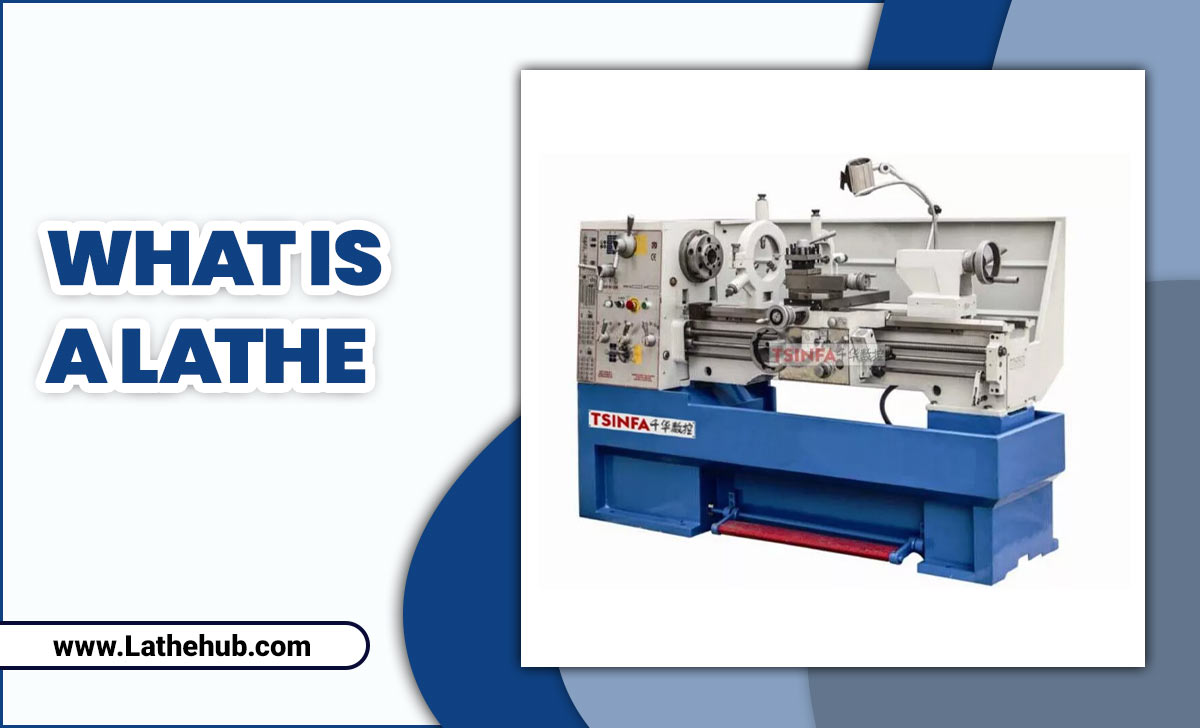
Explaining The Basic Components Of A Lathe
A lathe is a machine tool handy in woodworking, metalworking, and other industries to shape and cut various materials. It consists of several basic components that work together to perform different functions.
The main parts of a lathe include the bed, which provides a stable base for the machine; the headstock, which houses the motor and spindle; the tailstock, which supports the other end of the workpiece; the carriage, which holds and moves the cutting tools; and various controls and mechanisms for adjusting speed, feed rate, and other parameters. Each component plays a crucial role in the functioning of the lathe and allows for precise shaping and machining of materials.
Types Of Lathe Machines
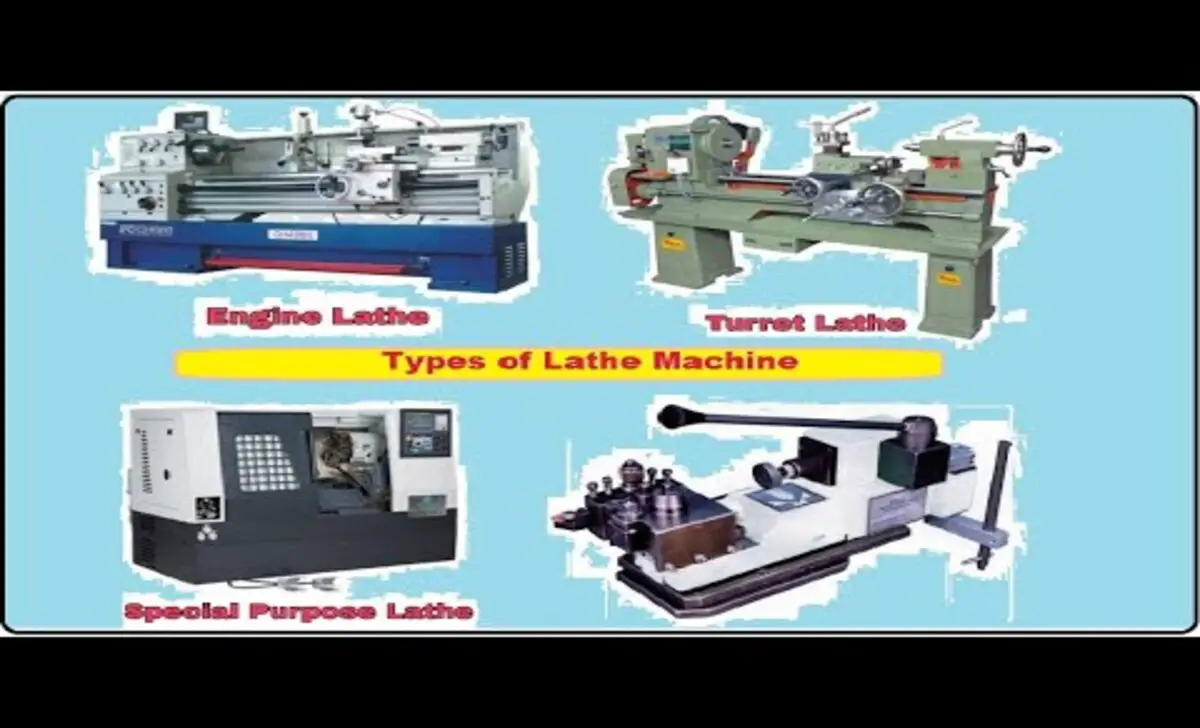
Various types of lathe machines cater to different machining needs. Lathe machines are powerful tools used in machining processes to shape and cut materials precisely. These machines consist of a rotating spindle that holds the workpiece and a cutting tool that moves across the material to remove unwanted sections.
Each type of lathe machine is designed to handle specific materials, operations, and sizes. The main types of lathe machines include engine lathes, speed lathes, turret lathes, toolroom lathes, and glass lathes.
Engine Lathe
The engine lathe played a crucial role in the Industrial Revolution. It is a versatile machine tool capable of cutting various materials, making it essential in manufacturing operations. The lathe bed of an engine lathe provides stability for machining operations, allowing for precise turning, drilling, facing, and taper turning operations. Engine lathes have been a staple in machine shops and are widely handy in various industries.
Speed Lathes
As the name suggests, speed lathes are popular for their spinning capabilities. They are ideal for turning operations on wood, metal, and plastic. Speed lathes have a simple design and are commonly handy for light-duty work. They can achieve high spindle speeds, allowing for fast and efficient machining. Wood lathes, such as speed lathes, have specific designs for woodworking projects, such as turning table legs, bowls, and spindles.
Turret Lathes

Turret lathes are versatile machines commonly handy for the mass production of parts. They are equipped with a tool-holding turret, allowing quick tool changes and enhancing productivity. Turret lathes can perform various machining operations, such as turning, facing, drilling, and knurling. They are widely handy in metalworking industries, where efficiency and precision are essential.
Tool Room Lathes
Toolroom lathes are precision cutting machines commonly found in toolrooms and machine shops. They have specific designs for high-accuracy work, such as creating parts with complex geometries or tight tolerances. Toolroom lathes offer versatility in machining different materials and are suitable for prototyping and low-volume production. These lathes are essential tools for machinists who require precision in their work.
Glass Lathes
Glass lathes are specialized machines used for the precision machining of glass components. They are commonly handy in producing optical and scientific instruments. Glass lathes require special tooling and techniques for machining glass parts. They are essential for creating symmetrical and precise glass components. Glass lathes can shape glass materials, such as thermal spraying, to create nicely shaped workpieces.
Step-By-Step Guide On What Is A Lathe Works, From Setup To Operation
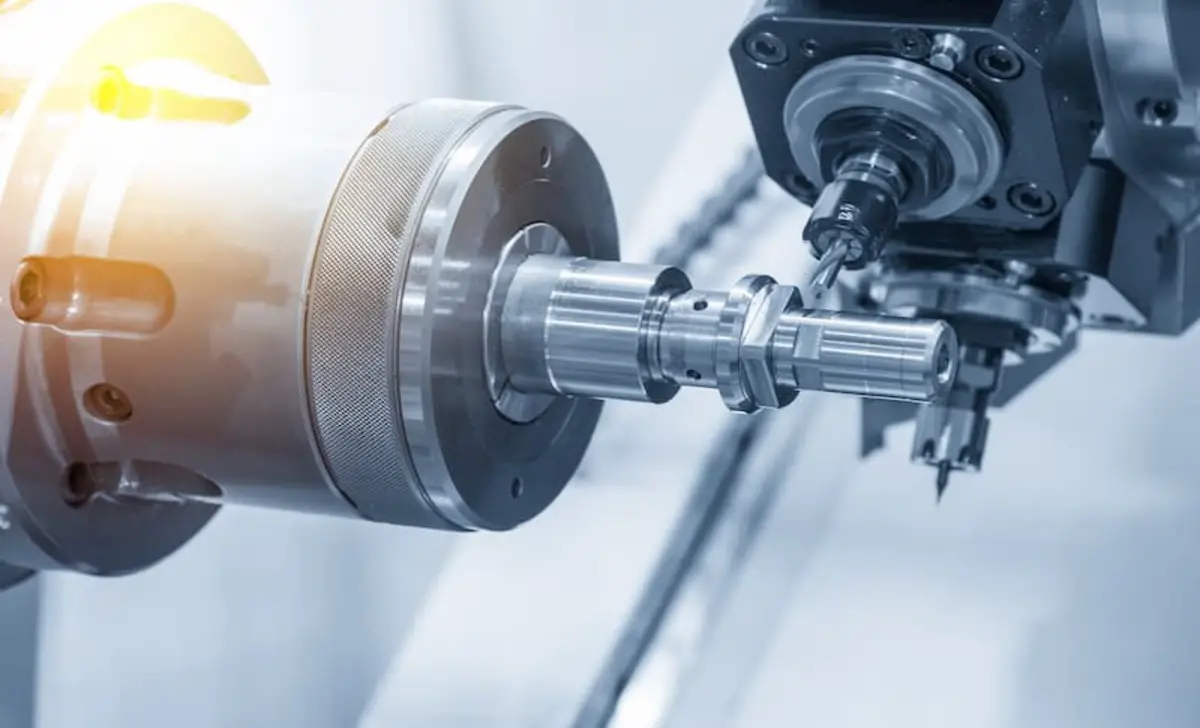
A lathe is a machine tool that shapes and cuts various materials, such as wood or metal. It rotates the workpiece on its axis while a cutting tool is applied to shape or remove material from the workpiece. Lathe works involve using a lathe machine to shape and manipulate wood, metal, and plastic materials.
Begin the process by securing the material to be worked on the lathe machine’s spindle. Following these steps, you can effectively operate a lathe and create precise and intricate shapes in various materials. Here is a step-by-step guide on what a Lathe works, from setup to operation:
Setting Up The Lathe Machine
Setting up a lathe machine involves several key steps to ensure proper operation. Firstly, place a lathe machine on a stable and level surface, preferably a workbench or a stand designed for lathe machines. Once the machine is in place, it must be connected to a power source, typically electricity, to drive the lathe’s spindle and other components. The power source should meet the machine’s power requirements, considering voltage, phase, and frequency factors.
Understanding The Different Parts Of A Lathe
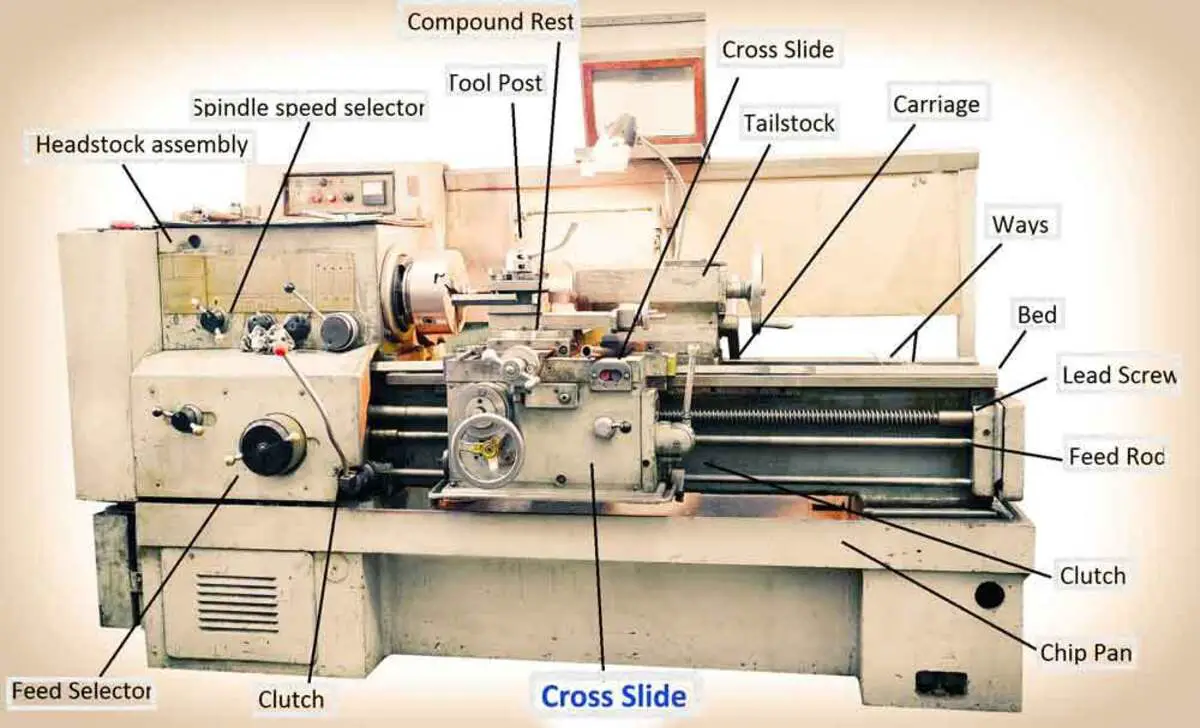
A lathe machine comprises various parts that work together to perform turning operations. Some of the essential parts of a lathe include the main spindle, headstock, tailstock, carriage, tool post, cutting tools, and bed. The main spindle in the headstock holds the workpiece and rotates it during machining.
The carriage holds the cutting tools and moves along the bed, allowing precision cutting. The tailstock supports and adjusts to secure the workpiece during turning operations. Other parts of a lathe, such as the tool post and cutting tools, shape and remove material from the workpiece.
Preparing The Material For Turning
Preparing the material that will be worked on properly before starting a turning operation. This involves choosing the appropriate material, determining the desired shape, and inspecting the material for any defects or irregularities. Different materials, such as wood, metal, and plastic, require different techniques and tools for turning. It is also important to consider the size and dimensions of the workpiece, as well as any specific requirements or constraints of the turning operation.
Mounting The Material On The Lathe
Once the material is properly prepared, it must be mounted securely on the lathe. You can do this using various methods, depending on the lathe type and the nature of the turning operation. Common methods of mounting a workpiece on a lathe include using a chuck, a faceplate, or a collet. A chuck is a clamping device that holds the workpiece, allowing it to rotate along with the lathe’s spindle.
The lathe operator attaches a flat metal plate, a faceplate, to the lathe spindle and mounts the workpiece onto it. A collet is a type of chuck that provides a more secure grip on the workpiece and is often handy for small or delicate materials.
Adjusting The Cutting Tools
Properly adjusting the cutting tools is crucial for achieving accurate and efficient turning operations. The cutting tools, mounted on the tool post of the lathe carriage, are responsible for removing material from the workpiece.
You must position them at the correct height, angle, and orientation to achieve desired cutting results. Machinists must ensure proper tool clearance, tool holder positioning, and tool feed rates for effective cutting. The type of cutting tool used, such as a turning tool, facing tool, or parting tool, will depend on the specific machining process and the desired shape of the workpiece.
Starting The Lathe And Selecting The Appropriate Speed
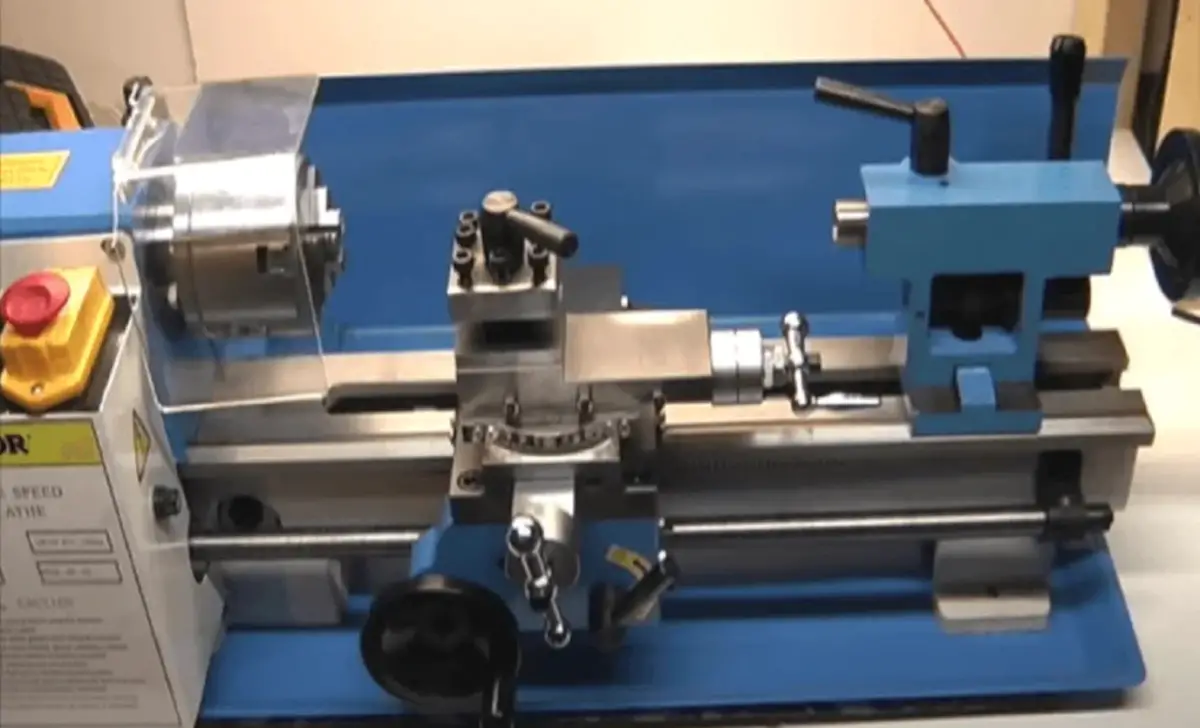
Once you set up the lathe machine and properly adjust the cutting tools, you can start the lathe. This involves turning on the power source and verifying the rotation direction of the spindle. You can select different speed settings depending on the lathe type to achieve the desired machining results. Spindle speed is a crucial factor in lathe operation, as it determines the rotation speed of the workpiece. You should choose the spindle speed based on various factors, such as the type of material, cutting tool, and desired surface finish.
Performing The Turning Process
The turning process involves removing material from the workpiece using cutting tools, resulting in a desired shape or surface finish. Performing the turning process is a crucial step in operating a lathe. To secure the workpiece to the lathe, the operator uses a chuck or a faceplate, ensuring it is centered and securely held in place. Here are the key steps in the turning process:
- Engage the lathe carriage to move the cutting tool along the workpiece, allowing precision turning.
- Apply cutting fluid or lubricant to facilitate a smooth turning process and prolong tool life.
- Use proper tool feed rates, depth of cut, and cutting techniques to achieve the desired shape and surface finish.
- Monitor the turning process for vibrations, unusual sounds, or tool wear indications.
- Implement facing, taper turning, or contouring techniques for specific turning operations.
Checking And Adjusting Measurements
During and after the turning process, it is important to check and adjust measurements to ensure precision cutting and desired outcomes. Machinists use precision measuring tools, such as calipers, micrometers, and gauges, to verify the turned workpiece’s dimensions, symmetry, and taper. Make adjustments, such as tool position, feed rates, or cutting speeds, to achieve accurate turning results. Precision cutting is essential for parts requiring close tolerances or strict dimensional requirements.
Safety Precautions When Operating A Lathe
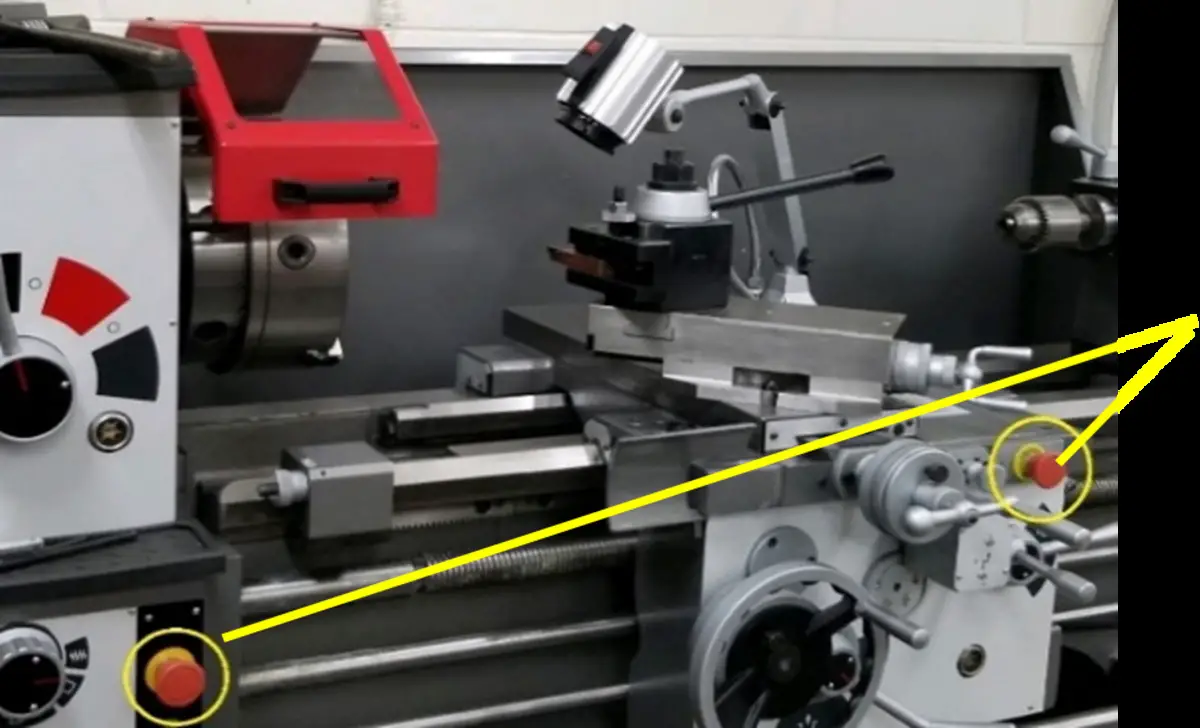
When operating a lathe, it is essential to prioritize safety to prevent accidents and injuries. Following these safety precautions can minimize the risk of accidents and create a safer working environment when operating a lathe. Here are some important safety precautions to keep in mind:
- Wear appropriate personal protective equipment, including safety glasses, gloves, and protective clothing.
- Keep loose clothing, jewelry, and hair secured to prevent entanglement with rotating parts.
- Familiarize yourself with lathe machine safety guidelines, emergency stop procedures, and machine controls.
- During lathe operations, avoid reaching into the rotating workpiece, chuck, or spindle area.
- Use caution when handling cutting tools, as they can be sharp and pose a cutting hazard.
- Always keep a safe distance from the lathe machine when operating.
Conclusion
To sum up, a lathe is a versatile machine handy for various purposes, from woodworking to metalworking. It consists of several components and comes in different types, such as engine lathes, speed lathes, and turret lathes. Understanding how a lathe works, from setup to operation, is essential for anyone looking to work with this machine.
Always prioritize safety precautions when operating a lathe to avoid accidents or injuries. Whether you need to turn, shape, or cut materials, a lathe can be a valuable tool in your workshop. So, if you’re interested in exploring the world of lathe machines, don’t hesitate to try and see what you can create.
Frequently Asked Questions
1.What Is The Lathe Handy For?
Ans: A lathe is a versatile machine tool handy for shaping and machining materials. It primarily turns cylindrical workpieces like wood or metal rods but can perform other operations like drilling, boring, knurling, and threading. Lathes are available in different sizes and types to cater to hobbyists and industrial needs.
2.Are Lathes Still Used?
Ans: Yes, lathes are still widely handy in various industries and for personal projects. They find applications in woodworking, metalworking, and manufacturing. Modern lathes have advanced features like CNC technology. Learning how to use a lathe can benefit DIY enthusiasts and professionals alike.
3.What Is A Lathe Handy For Woodworking?
Ans: Wood lathes are essential for shaping wood into various forms, like table legs, spindles, bowls, and decorative elements. They enable woodworkers to create symmetrical shapes and smooth finishes, unleashing their creativity and producing unique pieces for furniture making or artistic creations.
4.What Is The True Meaning Of Lathe?
Ans: A lathe is a machine tool used to shape materials like wood or metal by rotating them, while a cutting tool removes material along the surface. Lathes come in different sizes and types, including engine lathes, turret lathes, and CNC lathes. They are widely used in manufacturing, woodworking, and metalworking industries.
5.How Does A Lathe Machine Work?
Ans: A lathe machine rotates a workpiece on its axis while cutting tools remove material. The operator can adjust the speed and direction of rotation using hand controls. Lathes are versatile machines for shaping, drilling, turning, and sanding tasks.
